Mughal emperor Akbar, known as Akbar The Great, was born on October 25, 1542, and died on October 27, 1605. Abu’I Fath Jalal ud din Muhammad Akbar was the third Mughal emperor who governed from 1556 to 1605. Akbar succeeded his father, Humayun, under a ruler, Bairam Khan, who helped the young emperor extend and combine Mughal domains in India. To conserve the unity of his empire, he embraced many programs that won the loyalty of the Non-Muslim inhabitants of his realm. He improved and strengthened his central administration, consolidated his financial system, and recognized tax collection procedures. Although he never disowned Islam, he had an active interest in other religions impressing Parsis, Christians and Hindus as well as Muslims, to engage in a religious discussion with him.
Birth Place and Family Background
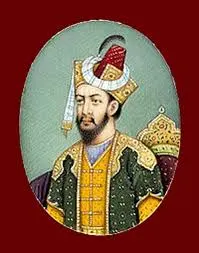
Akbar was descended from Mongols, Turks and Iranians – the three individuals who predominated in the political elites of North India in medieval times. Among his forefather were Genghis khan and Timur. Humayun, his father, was forced from his capital of Delhi by the Afghan dictator Sher Shah Sur was unsuccessfully trying to build his authority in the Sindh region. Soon Humayun had to quit India for Afghanistan and Iran, where the Shah provided him with some troops. At the age of 13, Akbar was made the governor of the region of Punjab. Humayun had hardly built his authority when he died in 1556.
Mughal Emperor Akbar: Marriage Life and Family Background
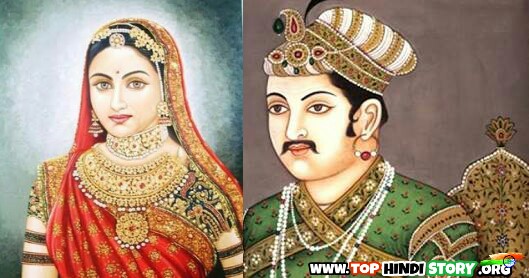
Akbar possesses six wives. His first wife’s name was Princes Ruqaiya Sultan Begum, who was his cousin too. His second wife was known as Bibi Khiera. She was the daughter of Abdullah Khan Begum. His third wife was Salima Sultana Begum. She was the daughter of Nur ud din Muhammad Mirza. Other wives were Bhakkari begum, the daughter of sultan Mahmud of Bhakkar. Akbar married Jodha Bai, the daughter of the Rajput ruler of Ajmer known as raja Bharmal. Jodha bai also known as mariam uz zamani. The daughter of the Arab shah, Qasima Banu begum, was also Akbar’s wife.
Akbar had five sons from different wives. His first two sons were Hassan and Hussain, whose mother was Bibi Aram Baksh. Both of them died at the initial age for no known reasons. Murad Mirza, Jahangir and Daniyal Mirza were his other sons. Akbar’s favourite son was Daniyal Mirza, who loved poetry like his father. Prince Salim, or Jahangir succeeded Akbar as the fourth emperor of the Mughal dynasty out of his three sons.
Important Years of Akbar
| 1562 | Visited Ajmer first time |
| 1562 | Ban on forcible conversion of war-prisoners into slaves |
| 1563 | Abolition of Pilgrimage Tax |
| 1564 | Abolition of Jaziya |
| 1571 | Foundation of Fatehpur Sikri |
| 1574 | Mansabadari System introduced |
| 1575 | Ibadatkhana was built |
| 1578 | Parliament of Religions in Ibadatkhana |
| 1579 | Proclamation of ‘Mazhar’ (written by Faizi) |
| 1580 | Dahsala Bandobast introduced |
| 1582 | din-i-Illahi/ Tauhid-i-Illahi |
| 1584 | Ilahi Samvat i.e Calender |
| 1587 | Ilahi Gaz i.e Yard |
Mughal Emperor Akbar: His Battles to Secure his Position

Akbar was demonstrated emperor amid dark circumstances. Agra and Delhi were threatened by Hemu, Mughal emperors, Adil shah being moved from all parts of Northern India. Akbar’s clutch over a fraction of Punjab, the one territory in his possession. It was quarrelled by Sikander Sur and was hazardous. Akbar got ungrudging support from Bairam Khan, the regent, until 1560. The Mughal victory at Panipat and the subsequent recovery of Gwalior, Mankot and Jaunpur devastate the Afghan threat in Upper India.
Akbar Dismissed Bairam Khan
Until 1560 Akbar’s administration diminished in the hands of Bairam Khan. Bairam’s regency was influential in the history of India. In the end, Mughal authority embraced the territory of Delhi, the whole of Punjab and a large area, which is now Rajasthan in the west.
Akbar soon became uneasy under Bairam Khan’s instruction. Persuaded by his wet nurse Maham Anaga and Hamidah Banu Begum, his mother, he dismissed Bairam Khan in march 1560. Akbar took a few important steps during that period. He ruled Malwa and hurried to Saranpur to punish Adham Khan. Adham Khan, the captain in charge of the journey, got punished for improper conduct.
The most significant event of 1562 was Akbar’s marriage to a Rajput princess. The marriage led to a firm collaboration between the Mughals and Rajputs.
Struggle for firm Personal Controls

Akbar ordered the entire area of Humayun’s Indian possession. He had adopted a new pattern of king-noble relationship that fitted the current need for a centralized state to be protected by religious groups and nobility of diverse ethnic groups. He insisted on balancing the territories under the order of the old Turani clans and striking a balance in the ruling class, promoting the Indian Muslims, Persians and Rajputs in the imperial service.
Subjugation of Rajasthan
Rajasthan occupied an essential place in Akbar’s scheme of conquest. Without building his Suzerainty over the area he would have no name to the title to the sovereignty of Northern India. Rajasthan is also bounded by Gujarat, a Centre of commerce with Western Asia and Europe countries. Akbar invaded Chittor in 1567. The fort fell into his hands in 1568. But the western of Mewar was still possessed by Rana Udai Singh. The fall of Chittor and Ranthambore brought almost all of Rajasthan under Akbar’s Suzerainty.
Conquest of Bengal and Gujurat
Akbar’s following purpose was to conquest Bengal and Gujarat. These areas connected Hindustan with the trading World of Asia, Europe and Africa. Akbar conquered Gujarat in the second attempt in 1573. He celebrated the victory by building a victory gate known as Buland Darwaza at his new Capital Fatehpur Sikri. The conquest of Gujarat propels the Mughal Empire’s border to the sea. Akbar’s confront with the Portuguese evoked curiosity about their culture and religion. Later Governor of Bihar Man Singh, also occupied Orissa and thus confined the Mughal gains in the east.
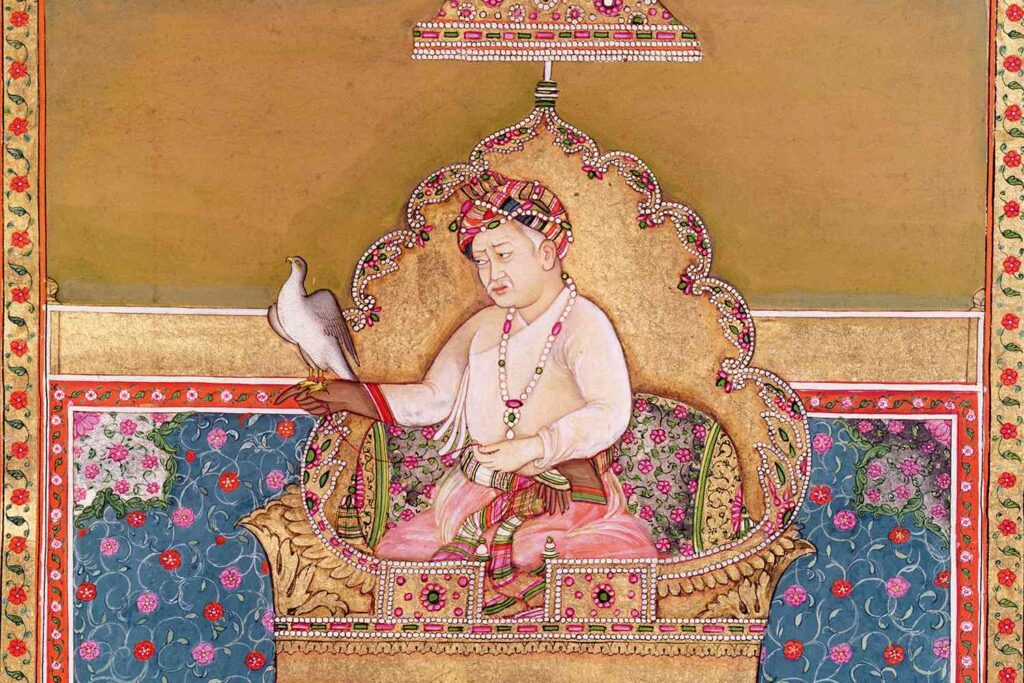
| Year | Province | From |
| 1560-62 | Malwa | Baz Bahadur |
| 1561 | Chunar | Afghan |
| 1562 | Merata | Jaimal |
| 1564 | Gondwana(Gadh Katanga) | Rani Durgawati(Regent of Bir Narayan) |
| 1568 | Chittor | Rana Uday Singh |
| 1569 | Ranthambor | Surjan Hada |
| 1569 | Kalinjar | Ramchandra |
| 1570 | Marwar | Chandrasena, Kalyanmal, Raj Singh, Rawal Harirai |
| 1572 | Gujarat | Bahadur Shah |
| 1574-76 | Bengal-Bihar | Daud Khan Karrani |
| 1576 | Haldighati | Rana Pratap |
| 1581 | Kabul | Mirza Hakim |
| 1585-86 | Kashmir | Yusuf Khan and Yakub Khan |
| 1590-91 | Sindh | Jani Beg Mirza |
| 1590-92 | Orissa | Kutul Khan and Nisar Khan |
| 1591 | Khandesh | Ali Khan |
| 1595 | Baluchistan | Yusufzai Tribes |
| 1595 | Kandhar | Muzaffar Husain Mirza |
| 1597-1600 | Ahmadnagar | Chand Bibi |
| 1601 | Asirgarh | Miran Bahadur Khan |
Mughal Emperor Akbar Policy Introduced in Agriculture and Administration
Administration Policy
Akbar separated his kingdom into provinces and called them Subas. There was the total number of 15 Subas. They were Awadh, Delhi, Bihar Allahabad, Ahmedabad, Ajmer, Agra, Bengal, Ahmednagar, Berar, Khandar, Kabul, Lahore, Malwa and Multan. The administration control given to the Subadar, who performed political and military functions.
He gets support by Diwan, who was in charge of financial records and revenue. For the preservation of peace and order in the Subas, the Subadar receive aid by other officers. There were Bakshi, Faujdars, Kotwal and Sadr. The provincial officers supervene the central administration and perform similar duties. Provinces division done to form Sarkars to Parganas and Parganas to villages. The nobles ordered large armies and had acquired a large amount of revenue. They were loyal to the kingdom and ruler. Many nobles had built independent networks of their own by the end of the 17th century. Akbar has a Council of Ministers to support them. Apart from Subadar and Diwan, some of the ministries were:
- The Wazir
- Khan-I-Saman
- Chief Qazi
Agriculture Policy
Todar Mal introduced efficient and effective land revenue and record system. He was the revenue minister of Akbar. There were three systems of land revenue-
- The Zabti System
- The Ghalla Bakhshi
- Kanat or Nasak
Rajput policy
He married a Rajput princess, who was the daughter of Raja Bharmal. It is an essential thing in the history of the Mughals. He gave significant posts in his courts to Rajputs. The important administrative place given to Raja Bhagwan Das and Man Singh raja. He eliminated the Jizya tax in 1564 and the pilgrim tax in 1563, which imposed on Hindus. He gave religious freedom to his Rajput wives.
His Navratnas and their Specific Field, along with their Work
Raja Birbal
- He played the role of court clown in the court of Akbar.
- His actual name was Mahesdas and Raja Birbal, the name given by Akbar.
- He was the poet and singer in Akbar the Great’s court.
- He was a master in Persian, Sanskrit and Hindi language.
- He also gave administrative and military service to Akbar and lost his life in the battle while defeating the unrest amongst Afghani tribes in Northwest India.
Tansen
- He was the disciple of Swami Haridas, and his birth name was Ramtanu. Later he learned music from Hazrat Muhammad Ghaus.
- Tansen, a musician in the court of Akbar and is remember for his epic Dhrupad compositions.
Abul Fazal
- His actual name was Shaikh Abu-al-Fazal Ibn Mubarak.
- He was the author of Akbar Nama
- He also translated the Bible into the Persian language.
Faizi
- His actual name was Shaikh Abu-al-Faiz Ibn Mubarak. His pen name is popularly known as Faiz. He was the poet laureate and Abul Fazal’s brother.
- Akbar gave him the status Malik-ush-shu’ara (court poet).
- He translated Lilavati into Persian.
Raja man Singh
- He was the Raja of Amber.
- He was the General in Akbar’s army and grandson of the father-in-law of Akbar, Raja Bharmal.
- He fought many battles, especially Haldighati, against Maharana Pratap.
Todar Mal
- During Akbar’s reign, he was the finance minister.
- He introduced standard weight and measures, settlement and land survey systems, officers and revenue districts.
Mullah Do Piaza
- He worked as an advisor to Akbar.
Fakir Aziao Din
- He was a Sufi mystic and an advisor.
- He used to advise on religious matters to Akbar.
Abdul rahim khana i khana
- He was the son of Bairam Khan. Akbar’s most trusted guardian and mentor.
- He is known for his Urdu couplets and astrology.
- He translated Babur Nama from the Chagatai language to the Persian language.
- He wrote two books on astrology; one is Khetakautukam, and the other is Dwatrimshadyogavali.
How he Reign India?
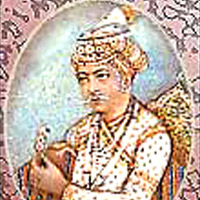
He reigned India from 1556 to 1605. He extends the Mughal power to most of the Indian Subcontinent. To conserve the unity of his empire Akbar adopted programs that won the loyalty of the non-muslim population of his country. He gave interest in other religions, convincing Parsis, Hindus and Christians, also Muslims. He encouraged scholars, poets, musicians, and painters making his court the centre of culture. Akbar built Fatehpur Sikri Fort, Allahabad Fort, Lahore Fort, Agra Fort and Humayun Tomb at Delhi.
How Does He Affect the Indian Princely State Graph?
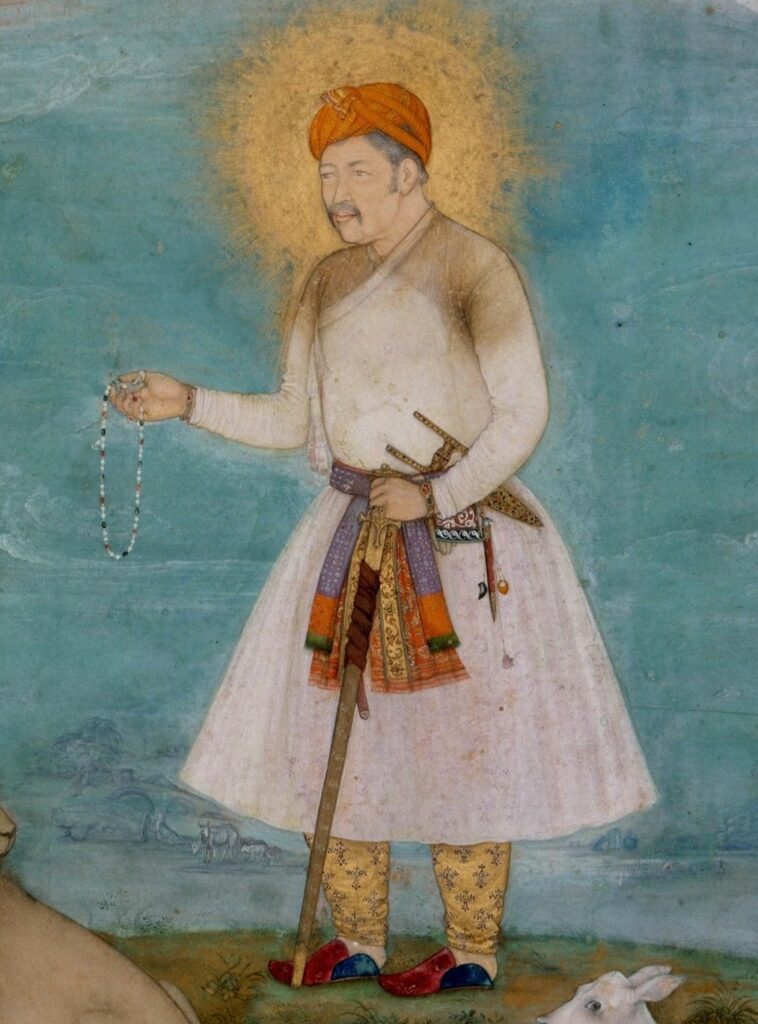
The Mughals were a Muslim dynasty that ruled the majority of Hindus. They have dominated much of South Asia for many centuries. Mughal rule was tolerable for all the religions of regions. Akbar extends Mughal power to most of the Indian Subcontinent. He has an interest in other religions. India was the centre of the global market for goods for many regions. Akbar attacked the first Malwa directing the route through the Vindhya Range to the plateau region of Deccan. He occupies the Rajputana region. Also, he captured the Fortress of Chitor.
Mughal Emperor Akbar: His Family Tree
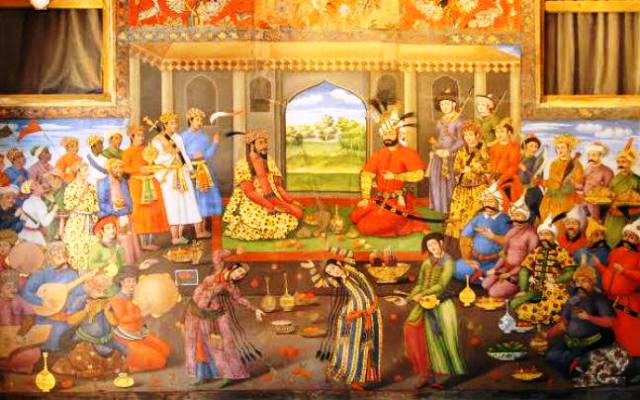
Akbar Sons
- Hassan Mirza
- Hussain Mirza
- Shahzada Salim
- Murad Mirza
- Daniyal Mirza
Akbar’s Daughters
- Fatima Banu Begum
- Shahzada Khanum
- Shakr Un Nissa Begum
- Firoze Khanum
- Aram Banu Begum
READ ALSO: Mughal Emperor Babur


Top site ,.. amazaing post ! Just keep the work on !
Top site ,.. i will save for later !